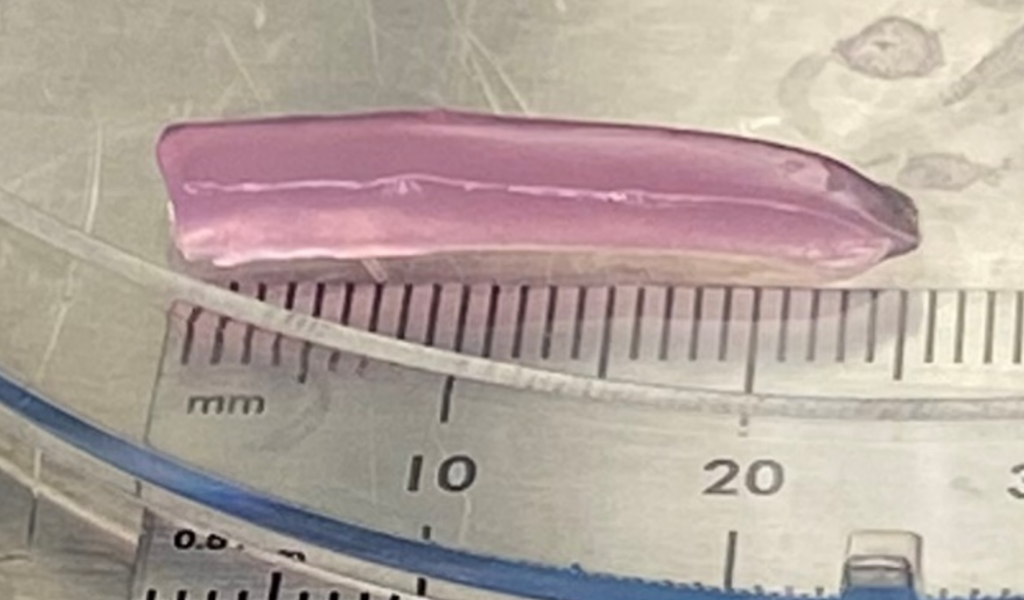PULLMAN, Wash. - A Washington State University research team is working to create an artificial cartilage that is similar to natural cartilage with a recipe that can be corrected along the way.
The researchers, including collaborators at Cornell University, reported on their work in the journal, ACS Biomaterials Science and Engineering.
"Our work lays the groundwork for designing systems capable of generating a tri-layered cartilage construct," said Bernie Van Wie, corresponding author on the work and a professor in the Gene and Linda Voiland School of Chemical Engineering and Bioengineering.
Bad knees, shoulders, and hips are a growing problem in an aging U.S. population. As people age and cartilage degrades around moveable joints, the most common treatments are pain relievers or invasive joint replacement surgery that entails long recovery times - with an annual cost in the U.S. of about $140 billion. Cartilage doesn't have blood vessels, so, unlike other areas of the body that get injured, it can't heal itself.
In recent years, researchers have harvested cells from patients to grow cartilage outside the body on unique collagen matrix scaffolds that improve tissue synthesis and lubrication, but the resulting material is soft - similar to the spongy cartilage in noses or ears. Consequently, its use has been limited to very small repairs.
Natural cartilage for knees and hips is a very thin material of about two to four millimeters made of three separate layers. The cartilage attached to the bone is very stiff with vertical fibers, while a middle layer absorbs impact in the joint. Finally, the surface layer is lubricating, smooth and bendable, well-suited for flexion in knee and hip joints.

In their proof-of-concept work, the WSU researchers developed a bioreactor that uses stem cells from bone marrow to grow cartilage with properties that vary with position. The researchers used surface shear, which is a physical force, to encourage the stem cells to grow in certain ways. As fluid moves through the tapered bioreactor, the amount of surface shear changes, which encourages the cells to produce cartilage that is more flexible at one location and stiffer at another.
"We create a gradient in this reactor, so that we get different types of cartilage, depending on where you are," said Van Wie.
The researchers were able to show that they could produce cartilage with different properties and strength depending on the forces imposed on the cells, with regions reaching closer to those that mimic the three-layer structure of natural cartilage.
As part of the project, the researchers are also developing a unique feedback mechanism. One problem with producing cartilage is that sometimes stem cells end up becoming bone cells instead of those that make cartilage. The researchers are adding fluorescent proteins, so that if the cells are manufacturing boney material, a protein flashes red and corrective action can be taken to silence undesired genes. If the reactor is working correctly, another protein flashes green for cartilage production.
It's not like we have a recipe and hope it works - rather, we're giving a recipe that can be corrected on the fly in real time.
Bernie Van Wie, professor
Washington State University
"So not only is our goal that of making this tri-layered cartilage, we're doing it with corrective feedback as the process continues," said Van Wie. "It's not like we have a recipe and hope it works - rather, we're giving a recipe that can be corrected on the fly in real time."
The researchers are now studying how putting the stem cells under pressure affects their growth and transformation. In addition to cartilage, the work could also have applications in other areas of tissue engineering, such as for ligaments, cardiopulmonary, renal, liver, or neuronal tissue.
Recent PhD graduate Terreill Robertson was the lead author on the published ACS Biomaterials work. In addition to Van Wie, WSU researchers include Wen-ji Dong, David Thiessen, Pakkanpat Pondipornnont and Nathan Kallish in the Voiland School of Chemical Engineering and Bioengineering, Arda Gozen and Alec Schuler in the School of Mechanical and Materials Engineering, and Ryan and Iwona Driskell in the School of Molecular Biosciences, College of Veterinary Medicine. The team also collaborates with Larry Bonassar and Salman Matan in the School of Bioengineering at Cornell University. The work is funded by the National Science Foundation's Reproducible Cells and Organoids via Directed-Differentiation Encoding (RECODE) program.






